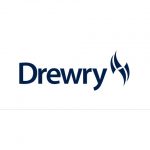Market participants in the East Coast South America region maintained a slightly bearish tone for the Atlantic Panamax dry bulk market amid concerns on deteriorating fundamentals, citing an oversupply of ships despite a healthy cargo book extending through May. The ECSA region is a crucial support pillar within the Atlantic Panamax dry bulk market during the peak grain season.
Grain flows remain robust
The April 2024 BIMCO Dry Bulk Shipping Market Overview highlighted concerns over recent cancellations of grain shipments by China, prompting a growing apprehension about demand. Early signs, however, suggest a strong wheat harvest in China, potentially decreasing imports. Moreover, the Chinese government’s decision to suspend maize shipments aims to support domestic farmers, however, maize imports are still expected to climb in 2024, driven by escalating meat consumption in the country.
Despite these uncertainties, a broker remained positive and said:”The overall grain market outlook is relatively positive.” This sentiment aligns with BIMCO’s projections, anticipating a 2%-3% increase in shipments for 2024.
Agribulk shipments saw an uptick in April.
S&P Global Commodities at Seas data showed 29 shipments on Kamsarmax vessels during week 17, slightly down from the previous week, likely due to subdued activity before the Labor Holiday in the Far East. Additionally, China imported around 7 million mt of soybeans in April, prized for their higher oil yield, with over 80% processed into animal feed to support its extensive livestock industry, as well as for producing edible plant oil. Historically, Brazilian soybean exports to China typically peak between May and June.
On volumes out of ECSA, a market source said: “We are still hearing bids for mid-May dates, which is two weeks away. However, most of the volume has shifted to later-May dates. It looks like healthy, stable volumes for the month.”
Concerns on tonnage count
“We have identified around 220 ships with open positions in the East of Suez that can realistically reach ECSA for loading in the next one to one-and-a-half months. In a more typical firm market, a more usual count is 160 to 180,” a dry bulk researcher said.
However, another broker said: “Tonnage count has been increasing for 30 days ahead, however, June arrivals have been counted in there as well. For the 30-day count, there are over 50 ships for South America ballasters, including Panamax and Kamsarmax type vessels.”
According to CAS data, in week 17, there were 122 laden vessels compared with 146 ballast vessels in the ECSA region.
Undercurrent of fixing activities
“We found ourselves with a couple of charterers needing to push prompt cargo shipments by May 15and were scrambling for ships by the end of the last week,” one shipbroker said.
“Bids soared above $19,000 DOP Singapore for a Kamsarmax vessel. By Monday this week, bids eased to around $18,500, dipping slightly into the low-$18,000s for late-May dates, with a cap at $18,000 for end May to early-June dates,” the shipbroker said, adding: “Early-May dates have offers well over $19,000, while beginning June has the cheapest offers at low-$18,000s. The market is currently date sensitive.”
Illustrating this disparity in date-sensitive fixing levels, smaller displacements such as the 74,940 dwt, 2013-build Sakizaya Brave were heard fixed to open APS in ECSA for the May 10-11 laycan for an ECSA fronthaul at $19,500.
Meanwhile, in bigger displacements, the 81,846 dwt, scrubber-fitted, 2020-build Bright Venture was heard fixed to open APS in ECSA for the May 17-18 laycan for an ECSA fronthaul at $19,650 and a ballast bonus of $965,000.
Healthy cargo volumes continue to buoy positive sentiment for ECSA grain trade in the Atlantic Panamax segment. However, the disparity in date-sensitive fixing levels in the first half of May and later-Maydates has kept market levels relatively stable. Looking ahead, market levels are likely to face pressure due to deteriorating fundamentals concerning tonnage.
Platts, part of S&P Global Commodity Insights, last assessed freight for the 60,000 mt, plus or minus 10%, Santos-Qingdao grain route at $48.00/mt on April 30, steady on the day, with market participants pointing to time-charter rates edging closer to around $18,137/d levels.
Geared vessel market remains healthy, active
In the Atlantic Supramax market, activity remained firm, with demand sustaining a decent pace while the tonnage count increased in the April 22-26 week.
“I see a positive sentiment despite a healthy tonnage count,” a shipbroker said.
Market levels for trans-Atlantic runs appeared to stabilize around the low- to mid-$20,000s/d, while fronthaul trips remained robust at the mid-$16,000s/d plus a $600,000 ballast bonus.
“There is some resistance from charterers, possibly due to the healthy tonnage count,” a market source said, adding: “Supramax ships for trans-Atlantic runs from North Brazil are priced at $21,000/d, while from South Brazil or the Upriver market, levels range from $22,000/d to $23,000/d.”
“The South Atlantic seems to have stabilized, but there is ongoing interest from Asia, which is maintaining positive sentiment,” a ship operator said.
Platts last assessed the 40,000 mt Recalada-Bejaia trans-Atlantic grain route at $39.25/mt April 30 and the 50,000 mt fronthaul Santos-Qingdao grain route at $45.50/mt over the same period.
Source: Hellenic Shipping News





